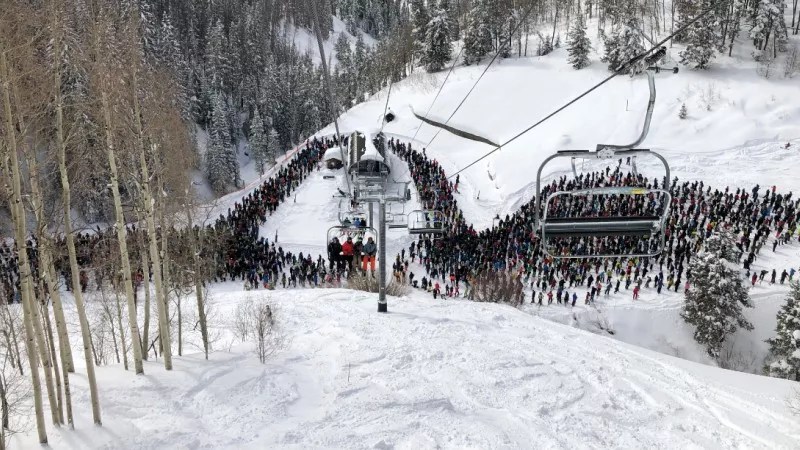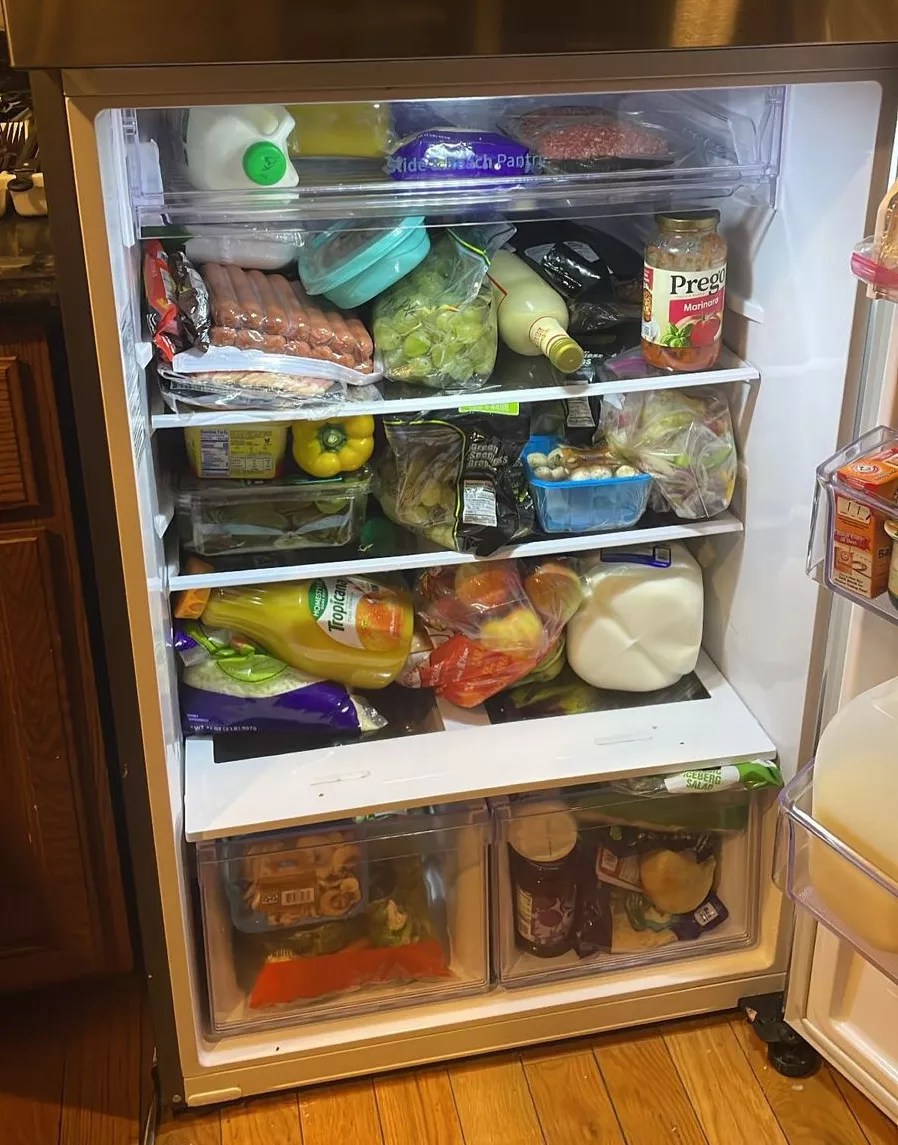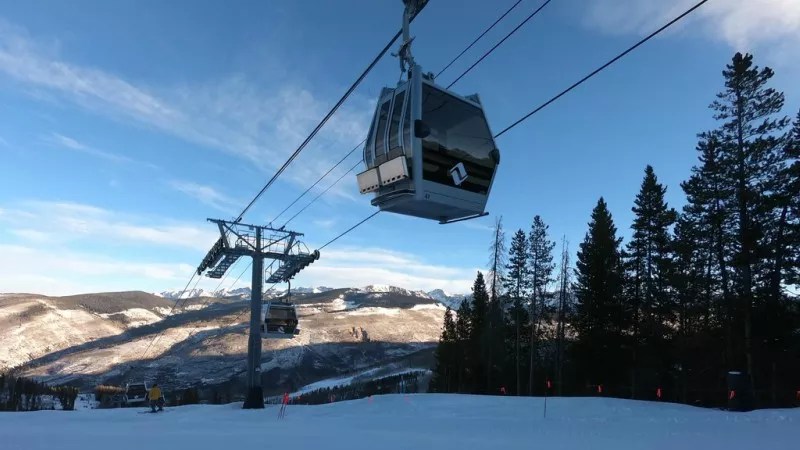

Audio By Carbonatix
Adrian Castro was excited to work his first ski season on Vail Mountain when he arrived in Colorado in early December. He had traveled more than 3,200 miles from his hometown of San Ramón, Costa Rica, about an hour and a half outside of the country’s capital of San José. But that excitement quickly faded once he began looking for a place he could afford to rent in the Vail Valley.
Castro, 22, says that since he arrived in Colorado, he has lived in nine different homes, sometimes with up to fourteen roommates. Some of the places he’s lived in were on a week-to-week basis in towns like Edwards, which is about a forty-minute bus ride to the resort. At the same time, he says, private landlords on apps like Airbnb, Vacasa and Vrbo have charged him and his roommates as much as $900 per person to rent a home.
That’s a hefty price for someone who makes only $22 per hour working part-time at one of the ski rental shops at the resort, he points out.
Like Castro, all of his roommates are classified as J-1 student workers, part of a temporary visa program that allows foreign students to come to the U.S. to work as au pairs, camp counselors or similar jobs. Some students come because the jobs pay well, and the money they take home can go a lot further in countries like Argentina, where every U.S. dollar trades for about 200 pesos. Castro says he heard about the program from some classmates at the University of Costa Rica who had made the trek to Vail before the pandemic, and they couldn’t stop talking about the thrill of experiencing the mountains and learning to ski.
Denver, make your New Year’s Resolution Count!
We’re $17,500 away from our End-of-Year campaign goal, with just a five days left! We’re ready to deliver — but we need the resources to do it right. If Westword matters to you, please contribute today to help us expand our current events coverage when it’s needed most.
Many of the other J-1 workers he has lived with work as dishwashers or housekeepers with Vail Resorts, Castro says. All of them were turned down for employee housing, and he suspects it’s because they arrived too late in the season. Winter seasonal job postings typically go up in July, with “high volume” positions such as ski school, lift operations, guest services and retail going up first, according to the Vail Resorts website. The website also says that employee housing options are “extremely limited” and that hired employees need to “start looking in the area as soon as possible, early and often.”
“Moving so much has been really hard on me,” Castro says. “I need a new cell phone, and a new laptop so I can finish my schoolwork when I get back home” – a reference to the biosystems engineering degree he is completing.
“All this moving is making it impossible to save any money,” he adds.
Castro’s case is a prime example of how the Town of Vail’s expensive rental housing market is impacting the local workforce, especially seasonal workers.

This is what a refrigerator looks like when fourteen people are crammed into one dwelling.
Adrian Castro
Employee housing through Vail Resorts is in such high demand that most housing units are taken months before the official ski season starts. This means that many workers have to find housing in Vail or nearby towns like Avon and Edwards, where the average rents range from about $4,500 to $5,500 per month, according to Zillow. For comparison, employee housing options typically rent for between $500 and $620 per month per person, according to the Vail Resorts website. It’s a difficult challenge for anyone in Castro’s predicament to navigate, let alone an individual living and working in a foreign country.
Rachel Levitsky, a communications manager for Vail Resorts, says that the company has about 1,200 housing units in Eagle County that are reserved for employees at Vail and Beaver Creek. Levitsky adds that “the vast majority” of Vail’s housing units are assigned to employees in front-line jobs in their first season with the company. Vail also requires J-1 workers to affirm that they have secured housing before arriving for the season, she says.
“Still, affordable housing is a crisis in our mountain communities, and requires commitment by us and all of our communities to support projects that create affordable housing for our front-line team members and the local workforce,” Levitsky continues.
Vail Resorts has recently put forth some ideas to increase the number of housing units it can offer employees. In April 2022, the company announced that it intended to spend $17 million to build 165 employee housing units. However, Vail’s town council rejected the proposal last August because of its potential impact on the local bighorn sheep population, the Colorado Sun reported.
Meanwhile, the town’s plans to redevelop the Timber Ridge apartments – one of the complexes that has employee housing options – will be quite costly. The project plans to increase the number of apartments at Timber Ridge from 96 to 284, at a total cost of more than $148 million, according to a story in the Vail Daily. The town expects to start construction on this project in April 2024.
For J-1 workers like Castro, though, the cost of waiting for these new units to become available is hard to bear. Right now, Castro says that he and his friends have secured housing through March 16. After that, he is unsure where they will go. But that uncertainty hasn’t slowed the number of customers he’s asked to serve on a given day.
In January, Vail Resorts CEO Kirsten Lynch told investors that the total number of skiers who visited its resorts has increased by about 13 percent year over year, partly because of “improved conditions” at its Colorado, Utah and Tahoe locations.
But Castro doesn’t think Vail is keeping enough employees around to help during the later part of the season. He says there are just eight other people who work at the rental shop now, compared to the 26 employees it had at the beginning of the season. He adds that the increase in skier numbers has resulted in days where he has had to work through lunch to help customers get fitted for boots or to repair rental skis.
It can also be tough to relax at home after a long workday when you’re living with fourteen roommates, he notes. Everyone he lives with works a different schedule, and people are cooking meals at all hours of the day. Meanwhile, they’ve had to cram as many as five people into a single bedroom at some homes, which leaves little room for a comfortable night’s sleep.
“People store their clothes everywhere. I mean, the kitchen table, coffee table, cabinets. Everywhere has become a closet,” Castro says. The snow is so good and the crowds keep coming, so Vail has announced that it will stay open until May this year. But who will be there to work?
To Kevin Nelson, a resort management professor at Western Colorado University, the issues Castro and his friends are experiencing are indicative of the struggles that many resorts are facing post-COVID. Resorts have been facing staffing shortages, which has made them more reliant on J-1 workers. At the same time, high housing costs, stubborn inflation and regulatory burdens have made it harder for these companies to build more employee housing options.
Still, providing employee housing for J-1 workers should be on top of every resort owner’s mind, Nelson says – not least because J-1 workers are performing jobs that locals aren’t keen on doing. Providing housing can also inspire someone to return to work a second or third season, which cuts down on employee turnover costs, he added.
“It can really ruin a resort’s business model if they don’t support their J-1 workers with adequate housing,” Nelson says.
In fact, data from the U.S Department of State shows that there were more than 11,000 J-1 workers who entered Colorado in 2022. A zip-code-level filter of that data shows that more than 1,200 of these J-1 workers wound up in Vail, representing a 19 percent increase from 2019, before the pandemic began. Vail Resorts is the largest employer in Vail that benefits from these employees.
Levitsky says J-1 workers make up “about 10 percent” of Vail Resorts’ overall workforce, but declined to provide specific employment figures for the company’s property in Vail.
A representative from the U.S. Department of State said in a prepared statement that the agency is “actively undertaking a review of reported concerns in the Vail area” to ensure sponsors and employers are complying with the program’s regulations, but declined to provide specifics.
For Castro, however, the experience of moving so frequently has put a damper on his desire to return for another season.
“Living like this is an experience I’ll keep with me for the rest of my life,” Castro says. “But it’s not something that I ever want to experience again.”